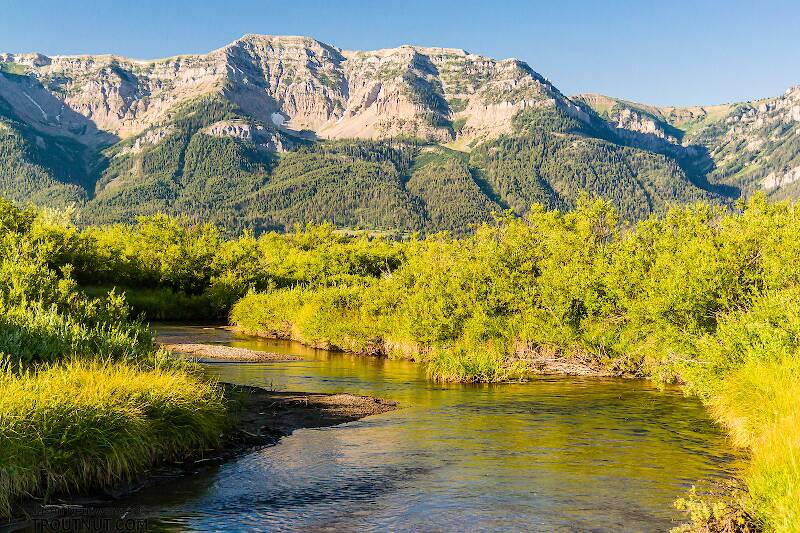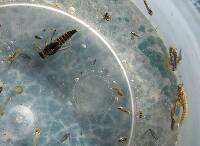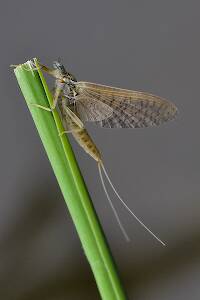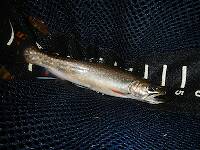
Salmonflies
Pteronarcys californica
The giant Salmonflies of the Western mountains are legendary for their proclivity to elicit consistent dry-fly action and ferocious strikes.
Featured on the forum

This one was surprisingly straightforward to identify. The lack of a sclerite at the base of the lateral hump narrows the field quite a bit, and the other options followed fairly obvious characteristics to Clostoeca, which only has one species, Clostoeca disjuncta.

Troutnut is a project started in 2003 by salmonid ecologist Jason "Troutnut" Neuswanger to help anglers and
fly tyers unabashedly embrace the entomological side of the sport. Learn more about Troutnut or
support the project for an enhanced experience here.
By Troutnut on September 16th, 2020
With smoke from the west coast wildfires beginning to clear just a little, I took a few hours to fish one of the nearest access points on the Yakima River, where the fish are small and the water uncrowded. There were some stoneflies and caddisflies in the air--I collected one of each, representing the most abundant species--but there weren't enough bugs on the water to get the fish rising, except for the abundant 3-inch-long Chinook Salmon parr. I continued playing around with my new Euro nymphing rig and landed several rainbows up to 12", including my first double on that rod.
Photos by Troutnut from the Yakima River in Washington
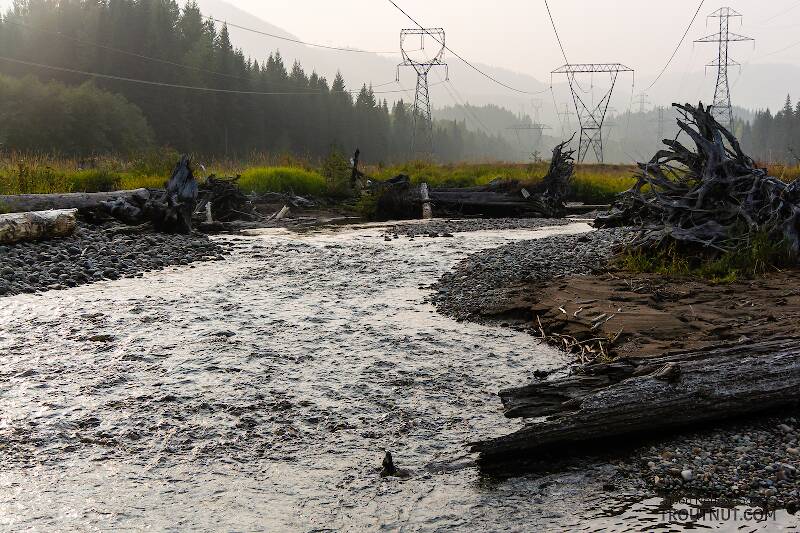
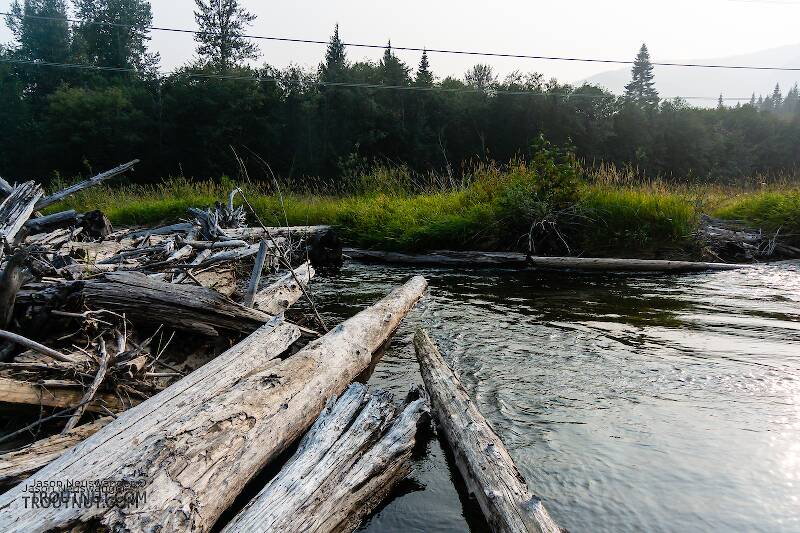
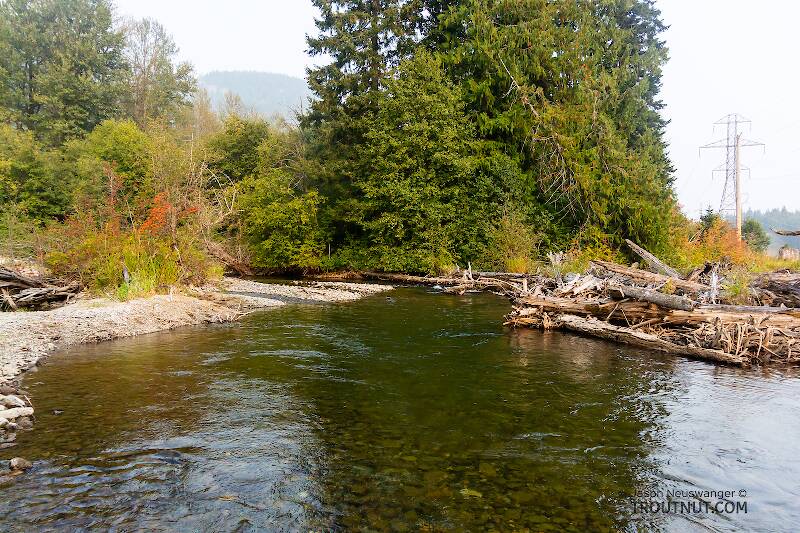
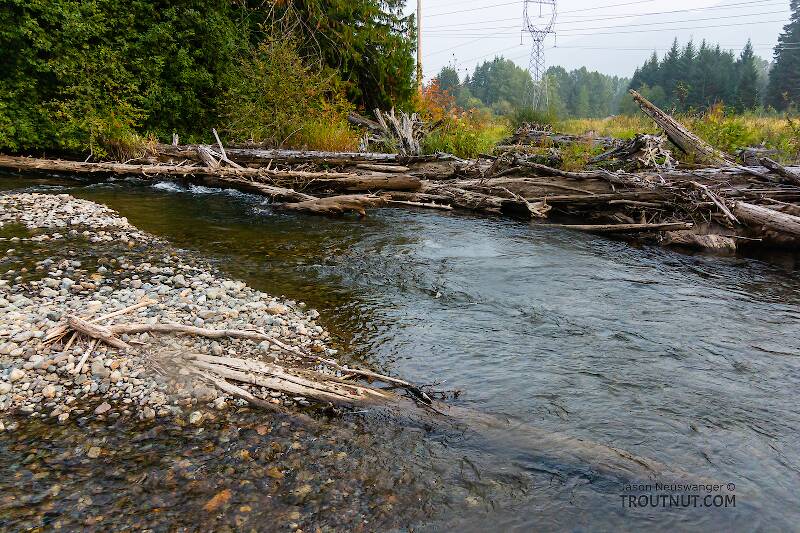
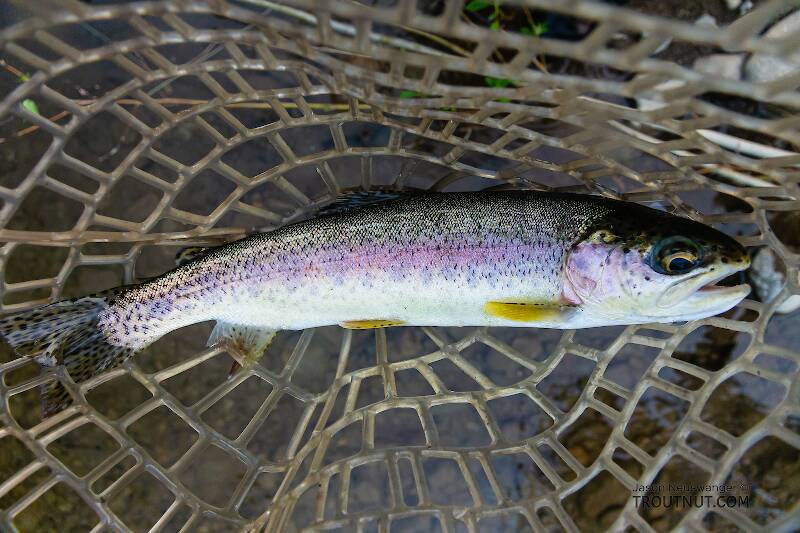
Closeup insects by Troutnut from the Yakima River in Washington
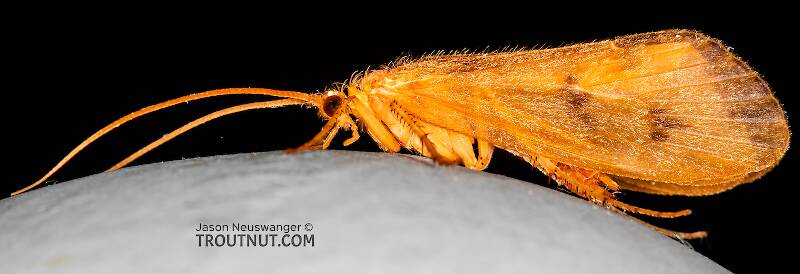
I first just assumed this was Dicosmoecus based on anglers' conventional wisdom since it's a large orange "October caddis," but Creno set me straight. I should have keyed it out. After another look under the microscope, it lacks an anepisternal wart on the mesopleuron, which rules out Dicosmoecus. The midtibiae have 2 apical spurs and 1 pre-apical spur, and from there the color pattern of the wing points to Onocosmoecus. The location then narrows the species to unicolor.
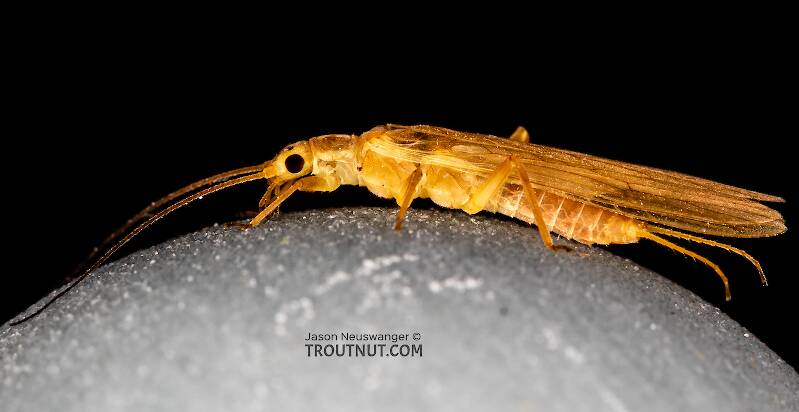
The family ID on this one was a little bit tricky. Just going by the size, shape, and color, it looks like Chloroperlidae. However, the second anal vein of the forewing is does not appear to be forked, and the apical maxillary palpal segment is close to the length of the penultimate segment, both of which rule out that family. The position of the cubitoanal crossvein relative to the anal cell in the forewing -- touching it in this case -- indicates Perlidae (and it really doesn't have the "look" of Perlidae at all), but other characteristics, such as the metathorastic sternacostal sutures and lack of gill remnants, point to Perlodidae. That's the right answer. Moving on to Perlodidae, the key characteristics in Merritt & Cummins lead straightforwarly to Isoperla, and the species key in Jewett 1959 (The Stoneflies of the Pacific Northwest) leads to Isoperla fusca.
There is one caveat: That source does suggest a May-July emergence, whereas this one was collected in mid-September.
There is one caveat: That source does suggest a May-July emergence, whereas this one was collected in mid-September.
Quick Reply
Related Discussions
Topic
Replies
Last Reply
18
Apr 5, 2012
by Entoman
by Entoman
8
Oct 21, 2017
by Partsman
by Partsman

